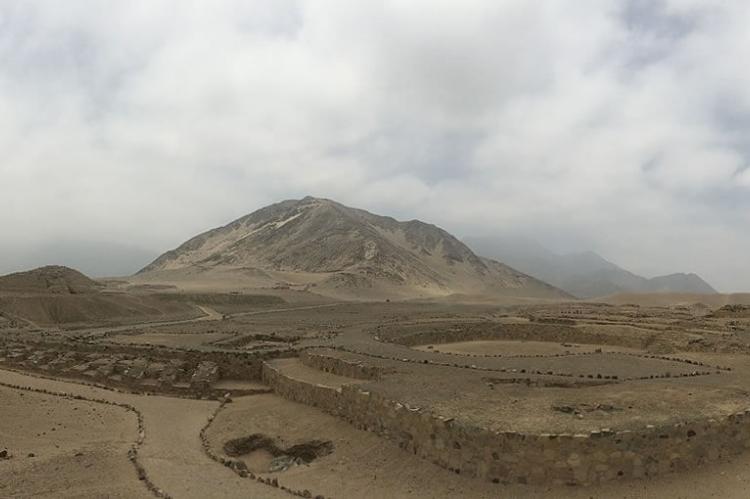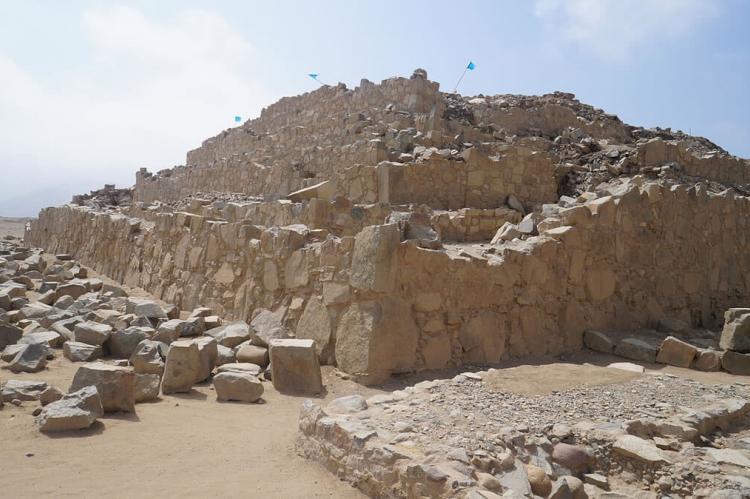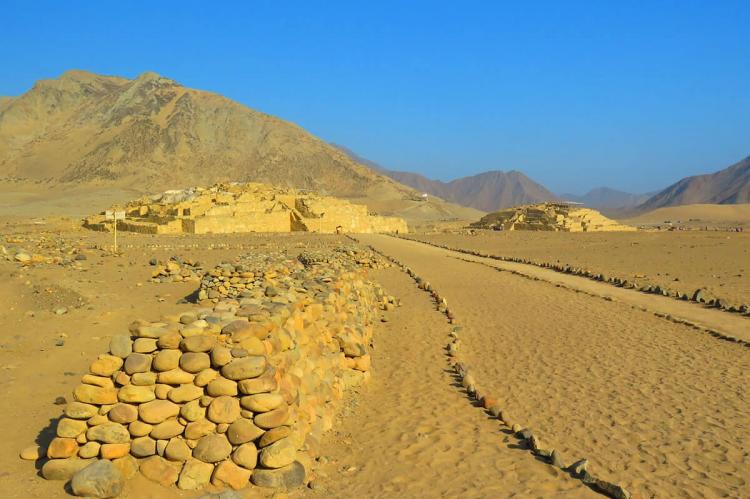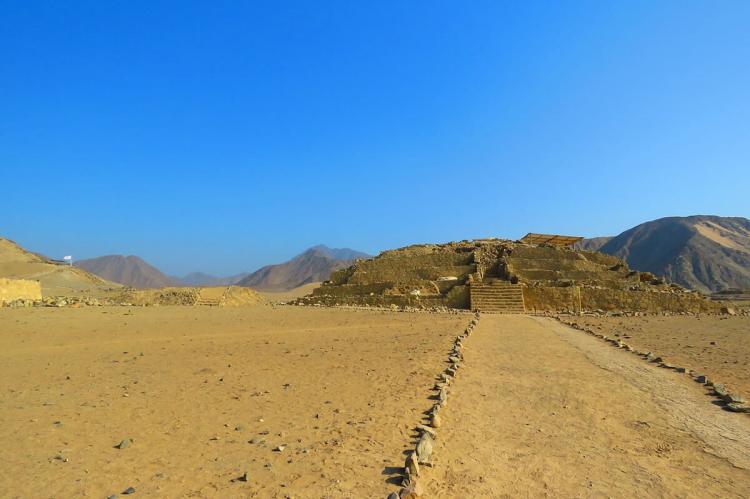Sacred City of Caral-Supe (Peru)
The Sacred City of Caral-Supe is a well-preserved 5000-year-old archaeological site on a desert terrace overlooking the green valley of the Supe River in Peru. It dates back to the Late Archaic Period of the Central Andes and is the oldest center of civilization in the Americas.
Sacred City of Caral-Supe
The Sacred City of Caral-Supe, or simply Caral, is a 5000-year-old 626 ha (1,546 acres) archaeological site on a desert terrace overlooking the green valley of the Supe River in Peru. The city was declared a UNESCO World Heritage Site in 2009.
The archaeological site is located in the Supe Valley of Peru, near the current town of Caral, 182 km (113 mi) north of Lima, 23 km (14 mi) from the coast and 350 m (1,148 ft) above sea level. It dates back to the Late Archaic Period of the Central Andes and is the oldest center of civilization in the Americas.
Caral was inhabited between the 26th century and 20th century BC and has been described by its excavators as the oldest urban center in the Americas.
Exceptionally well-preserved, the site is impressive in terms of its design and the complexity of its architecture, especially its monumental stone and earthen platform mounts and sunken circular courts. Its early use of the quipu as a recording device is significant.
The Sacred City of Caral-Supe reflects the rise of civilization in the Americas. As a fully developed sociopolitical state, it is remarkable for its complexity and impact on developing settlements throughout the Supe Valley and beyond.
The design of the city's architectural and spatial components is masterful, and the monumental platform mounds and recessed circular courts are powerful and influential expressions of a consolidated state.
One of 18 urban settlements in the same area, Caral features complex and monumental architecture, including six large pyramidal structures.
A quipu (the knot system used in Andean civilizations to record information) found on the site testifies to the development and complexity of Caral society.
The city's plan and some of its components, including pyramidal structures and the residence of the elite, show clear evidence of ceremonial functions, signifying a powerful religious ideology.
No trace of warfare has been found at Caral: no battlements, weapons, or mutilated bodies. Findings suggest it was a gentle society built on commerce and pleasure.
In one of the temples, uncovered were 32 flutes made of condor and pelican bones and 37 cornetts of deer and llama bones. One find revealed the remains of a baby, wrapped and buried with a necklace made of stone beads.
{"preview_thumbnail":"/sites/default/files/styles/video_embed_wysiwyg_preview/public/video_thumbnails/49948915.jpg?itok=B5KcgyyQ","video_url":"https://vimeo.com/49948915","settings":{"responsive":1,"width":"854","height":"480","autoplay":0},"settings_summary":["Embedded Video (Responsive)."]}



